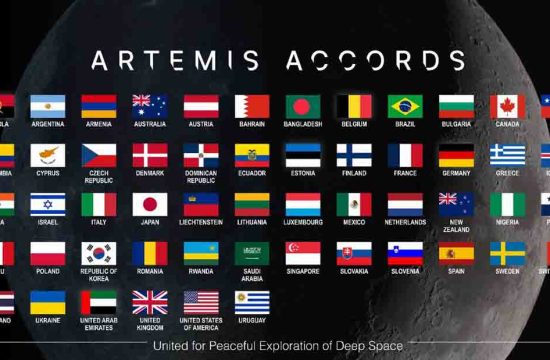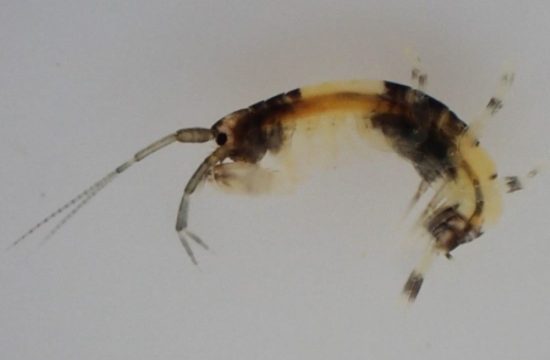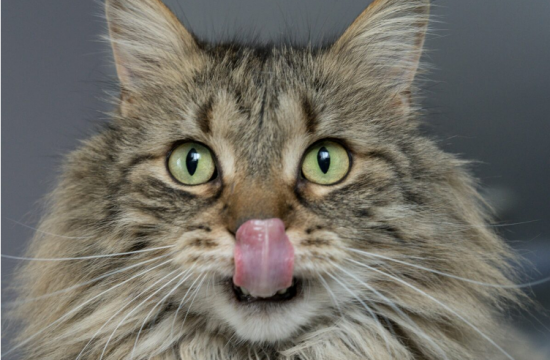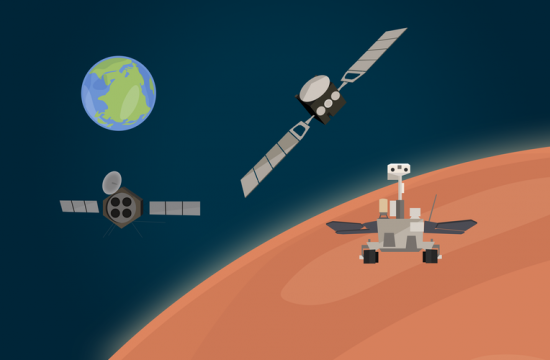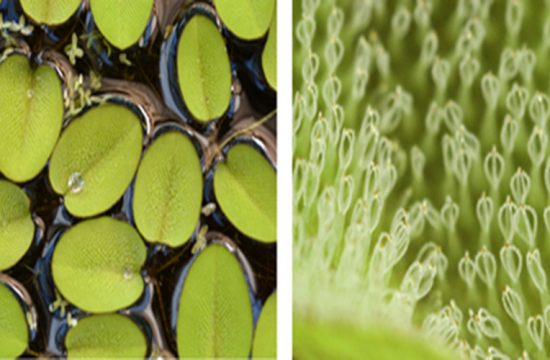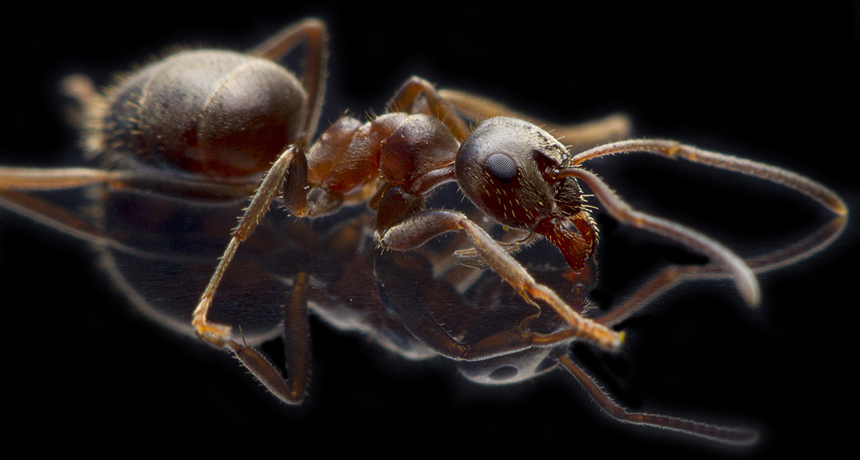
Most of us think ants are unsanitary. It certainly seems that way when they’ve invaded our homes, tromping through our food and carrying bits of it away. But scientists have spotted behaviors that show ants can be cleaner than you might think. Some species, for instance, form “kitchen middens” outside their nests. Those spots are where they dump their wastes, including fecal material. And one common species in Europe has now been caught going to the toilet — an ant toilet!
Tomer Czaczkes and colleagues at the University of Regensburg in Germany were studying these black garden ants (Lasius niger). The insects created kitchen middens outside their nests. They filled them with food scraps, corpses of dead nest-mates and other refuse. But the researchers also spotted distinct, dark patches within the nests of these ants that were living in the lab. The team thought the patches might be where ants had been pooping.
To find out, they set up an experiment. And it confirmed their suspicions. Their data now appear in the February 18 issue of PLOS ONE.
The researchers constructed 21 plaster nests in the lab (shown). Each nest — 9 centimeters (3.5 inches) in diameter — served a group of 150 to 300 ants. Every nest and its residents were then placed in a larger box, where the ants could forage for food.
The scientists fed the insects a sugar solution that was colored either red or blue. They also provided a protein food. They marked this with the other food coloring. Once a week for two months, each nest was photographed. Someone unfamiliar with the experiment recorded the locations of any dark patches in the nests and noted what color they were.
Every nest had at least one dark patch. Some had as many as four. The patches were always the same color as the sugar solution and were mostly in the nest corners. And the ants formed the dark nest patches whether their nest housed lots of ants or not.
The nest patches never contained nest debris, dead ants or colored bits of the protein food source. All of that, Czaczkes says, the ants had “placed tidily in midden piles outside.”
Indeed, he likens the newfound nest spots to “toilets because only feces [are] placed inside them.” In fact, he adds, this is the first time anyone has formally reported finding ant toilets. Other researchers, though, have seen similar structures in the nests of desert ants (Crematogaster smithi), Czaczkes and his coworkers note.
It’s not clear why the ants poop inside their nests. Not all insects are so picky about where they do their business when Nature calls. “Caterpillars spring to mind,” he notes. “They just leave their frass [feces] where it lies.”
Many species defecate away from their homes, for instance, to avoid spreading diseases that might be associated with those wastes. Indeed, honeybees make special “defecation flights.” But other insects have found feces to be useful as an antibiotic or fertilizer. After all, Czaczkes says, “Feces can be a useful commodity, and can be exploited for many purposes.”
For the black garden ants, then, there might be some benefit to doing their business indoors. “The next main question to ask is what the precise role of the toilet is,” he says. “Do the ants avoid putting their larvae there? Or is it perhaps a fungus garden? Or an antimicrobial bath? Or a store for nutrients?” Alas, he adds, getting a solid answer likely “will take quite some work.”
Power Words
antibiotic A germ-killing substance prescribed as a medicine (or sometimes as a feed additive to promote the growth of livestock). It does not work against viruses.
antimicrobial A substance used to kill or inhibit the growth of microbes. This includes naturally derived chemicals, such as many antibiotic medicines. It also includes synthetic chemical products, such as triclosan and triclocarban. Manufacturers have added some antimicrobials — especially triclosan — to a range of sponges, soaps and other household products to deter the growth of germs.
commodity Something that is useful or valued. It may be a farm crop (such as corn or milk), a product (such as cardboard or gasoline) or materials gleaned from the environment (such as fish or copper).
debris Scattered fragments, typically of trash or of something that has been destroyed. Space debris includes the wreckage of defunct satellites and spacecraft.
defecate To discharge waste from the body.
evolution A process by which species undergo changes over time, usually through genetic variation and natural selection. These changes usually result in a new type of organism better suited for its environment than the earlier type. The newer type is not necessarily more “advanced,” just better adapted to the conditions in which it developed.
exploitation (verb: to exploit)Taking advantage of one or more people for personal gain. Examples can include making people work for little or no pay, making people do things under threat of harm, or tricking people into giving up something of value.
feces A body’s solid waste, made up of undigested food, bacteria and water. The feces of larger animals are sometimes also called dung.
fertilizer Nitrogen and other plant nutrients added to soil, water or foliage to boost crop growth or to replenish nutrients that removed earlier by plant roots or leaves.
frass Insect feces.
fungus (plural: fungi) One of a group of single- or multiple-celled organisms that reproduce via spores and feed on living or decaying organic matter. Examples include mold, yeasts and mushrooms.
midden A waste heap or dump site for trash and bodily wastes. They have been associated with both human and animal colonies.
nutrients Vitamins, minerals, fats, carbohydrates and proteins needed by organisms to live, and which are extracted through the diet.
proteins Compounds made from one or more long chains of amino acids. Proteins are an essential part of all living organisms. They form the basis of living cells, muscle and tissues; they also do the work inside of cells. The hemoglobin in blood and the antibodies that attempt to fight infections are among the better known, stand-alone proteins.Medicines frequently work by latching onto proteins.
Source: student science



